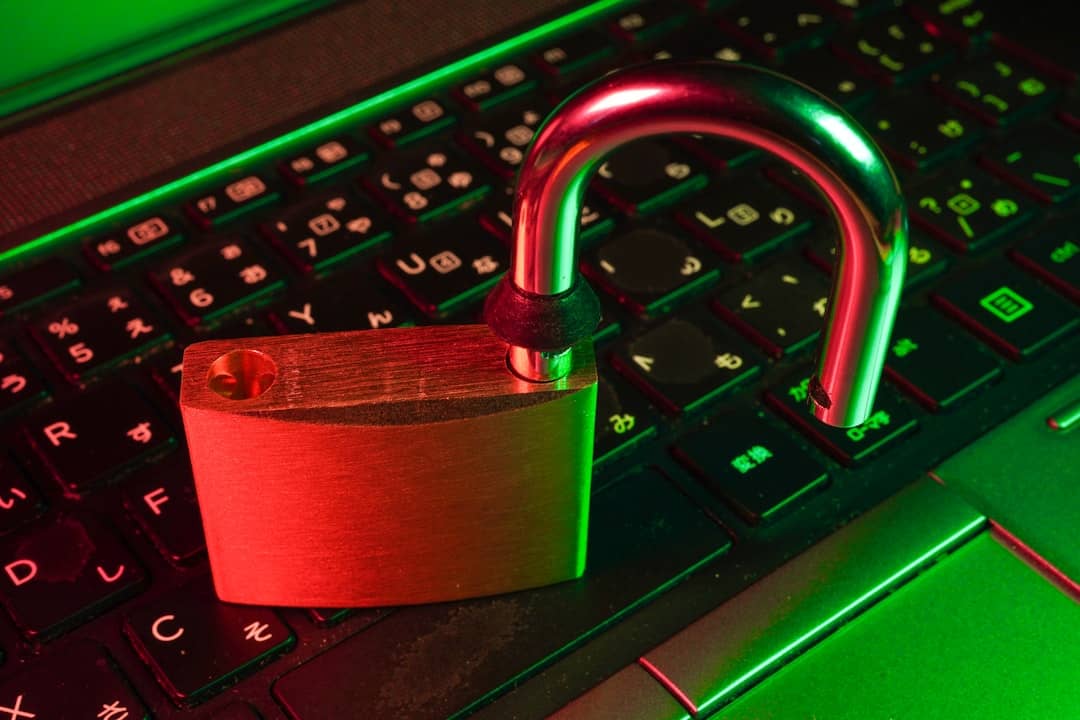In the digital era, cyber security has become a crucial aspect of both personal and professional spheres. As technology dependence increases, so does the risk of cyber attacks and data breaches. Understanding cyber security’s importance is vital for protecting sensitive information and preventing potential threats.
Cyber security encompasses various practices and measures designed to safeguard networks, devices, and data from unauthorized access or criminal exploitation. This includes protection against malware, phishing attacks, ransomware, and other cyber threats. By prioritizing cyber security, individuals and organizations can mitigate risks associated with cyber attacks and ensure the confidentiality, integrity, and availability of their digital assets.
Recognizing the potential consequences of a breach is also essential in understanding cyber security’s importance. Cyber attacks can have severe effects on individuals and businesses, resulting in financial losses, reputational damage, and legal ramifications. Personal information such as financial data, social security numbers, and private correspondence can be compromised, leading to identity theft and fraud.
For businesses, data breaches can cause significant financial repercussions, loss of customer trust, and regulatory penalties. Understanding the potential impact of cyber attacks helps individuals and organizations appreciate the need for robust cyber security measures to protect themselves and their assets.
Key Takeaways
- Cyber security is important for protecting sensitive information and preventing cyber attacks
- Strong passwords and two-factor authentication are essential for securing accounts and data
- Regularly updating software and systems helps to patch vulnerabilities and prevent security breaches
- Being cautious with email and internet usage can prevent falling victim to phishing scams and malware
- Regularly backing up data ensures that important information is not lost in the event of a cyber attack or system failure
- Educating employees and family members about cyber security best practices can help prevent security incidents
- Seeking professional cyber security assistance can provide expert guidance and support in protecting against cyber threats
Implementing Strong Passwords and Two-Factor Authentication
One of the fundamental practices in cyber security is the implementation of strong passwords and two-factor authentication. Passwords serve as the first line of defense against unauthorized access to accounts and sensitive information. It is crucial to create complex passwords that are difficult to guess or crack.
Strong passwords typically include a combination of uppercase and lowercase letters, numbers, and special characters. Additionally, it is important to avoid using easily guessable information such as birthdates, names, or common words. By implementing strong passwords, individuals can significantly reduce the risk of unauthorized access to their accounts and data.
In addition to strong passwords, two-factor authentication (2FA) provides an extra layer of security by requiring users to provide two forms of identification before accessing an account or system. This typically involves something the user knows (such as a password) and something the user has (such as a mobile device or security token). By enabling 2FA, individuals can further enhance the security of their accounts and protect against unauthorized access, even if their passwords are compromised.
Implementing strong passwords and two-factor authentication is a simple yet effective way to bolster cyber security and safeguard personal and sensitive information from potential threats.
Keeping Software and Systems Updated

Another crucial aspect of cyber security is the regular updating of software and systems. Software updates often include patches and fixes for known vulnerabilities and security flaws. By keeping software and systems up to date, individuals and organizations can ensure that their devices are equipped with the latest security measures to protect against potential threats.
Failure to update software can leave systems vulnerable to exploitation by cyber criminals who may exploit known vulnerabilities to gain unauthorized access or compromise data. Furthermore, outdated software can also pose compatibility issues and performance concerns, impacting the overall functionality and reliability of devices. It is important to regularly check for updates for operating systems, applications, antivirus software, and other programs to ensure that they are equipped with the latest security features.
By prioritizing software updates, individuals can proactively mitigate the risk of cyber attacks and maintain the integrity of their digital infrastructure. In addition to software updates, it is also important to keep hardware systems such as routers, firewalls, and network devices up to date with the latest firmware and security patches. These devices play a critical role in securing networks and data, and regular updates are essential to ensure their effectiveness in defending against cyber threats.
By staying vigilant with software and system updates, individuals can strengthen their cyber security posture and reduce the likelihood of falling victim to potential vulnerabilities.
Being Cautious with Email and Internet Usage
| Metrics | 2019 | 2020 | 2021 |
|---|---|---|---|
| Phishing Emails | 2000 | 2500 | 3000 |
| Malware Attacks | 1500 | 1800 | 2000 |
| Security Breaches | 100 | 120 | 150 |
Cyber security also involves being cautious with email and internet usage to mitigate the risk of falling victim to phishing attacks, malware, or other online threats. Email remains a common vector for cyber attacks, with phishing emails designed to trick recipients into divulging sensitive information or clicking on malicious links. It is important to exercise caution when opening email attachments or clicking on links from unknown or suspicious senders.
Individuals should be wary of unsolicited emails requesting personal information or urging urgent action, as these are often indicators of phishing attempts. Moreover, it is essential to be mindful of internet usage habits to avoid visiting potentially malicious websites or downloading unsafe content. Cyber criminals often use compromised websites or malicious downloads to distribute malware or exploit vulnerabilities in users’ devices.
Individuals should exercise caution when browsing the internet and only visit reputable websites that use secure connections (HTTPS). Additionally, it is important to be cautious when downloading files or software from the internet and verify their authenticity before installation. By being cautious with email and internet usage, individuals can reduce the risk of falling victim to cyber attacks and protect themselves from potential threats.
Educating oneself about common phishing tactics and practicing vigilance when interacting with email and online content is essential for maintaining a secure online environment.
Backing Up Data Regularly
Backing up data regularly is a critical practice in cyber security that ensures the availability and integrity of information in the event of a data loss incident or cyber attack. Data backups involve creating copies of important files, documents, and other digital assets and storing them in a secure location separate from the original source. In the event of a ransomware attack, hardware failure, or accidental deletion, having up-to-date backups allows individuals to restore their data without experiencing significant disruptions or losses.
There are various methods for backing up data, including using external hard drives, cloud storage services, or network-attached storage (NAS) devices. It is important to establish a regular backup schedule to ensure that new or modified data is consistently backed up. Additionally, individuals should verify the integrity of their backups periodically to confirm that they are accessible and complete.
By backing up data regularly, individuals can mitigate the impact of potential data loss incidents and maintain business continuity in the face of cyber threats. Data backups serve as a crucial safeguard against ransomware attacks and other forms of data corruption, providing peace of mind knowing that critical information is protected and recoverable in case of an emergency.
Educating Employees and Family Members

Educating employees and family members about cyber security best practices is essential for creating a culture of awareness and vigilance against potential threats. In a professional setting, employees should receive training on how to recognize phishing attempts, create strong passwords, use company resources securely, and report suspicious activities. By fostering a culture of cyber security awareness within an organization, businesses can empower their employees to become active participants in safeguarding sensitive information and preventing potential breaches.
Similarly, educating family members about cyber security at home is crucial for protecting personal information and devices from online threats. This includes teaching children about safe internet usage habits, setting parental controls on devices, and discussing the importance of privacy and online safety. Family members should be informed about the risks associated with sharing personal information online, interacting with strangers on social media, and downloading content from untrusted sources.
By educating employees and family members about cyber security best practices, individuals can create a more secure digital environment both at work and at home. Knowledgeable individuals are better equipped to identify potential threats, implement protective measures, and respond effectively in the event of a cyber security incident.
Seeking Professional Cyber Security Assistance
In some cases, seeking professional cyber security assistance may be necessary to address complex threats or vulnerabilities that require specialized expertise. Professional cyber security assistance may come in the form of hiring dedicated IT professionals or engaging third-party security firms to conduct risk assessments, penetration testing, or incident response services. These professionals can provide valuable insights into an organization’s cyber security posture and recommend tailored solutions to address specific vulnerabilities or compliance requirements.
Additionally, individuals may seek professional assistance for implementing advanced security measures such as intrusion detection systems (IDS), security information and event management (SIEM) solutions, or encryption technologies. These advanced tools require specialized knowledge for deployment and management, making professional assistance invaluable for ensuring their effectiveness in defending against sophisticated cyber threats. Furthermore, professional cyber security assistance can also provide ongoing support for monitoring networks, responding to incidents, and staying abreast of emerging threats and best practices.
By leveraging the expertise of professionals in the field, individuals and organizations can enhance their cyber security capabilities and better protect themselves against evolving cyber threats. In conclusion, understanding the importance of cyber security is crucial for safeguarding personal and sensitive information from potential threats. By implementing strong passwords and two-factor authentication, keeping software and systems updated, being cautious with email and internet usage, backing up data regularly, educating employees and family members about cyber security best practices, and seeking professional assistance when needed, individuals can strengthen their cyber security posture and mitigate the risks associated with cyber attacks.
Prioritizing cyber security is essential in today’s digital landscape to ensure the confidentiality, integrity, and availability of digital assets while minimizing the potential impact of breaches or data loss incidents.
If you’re interested in exploring virtual spaces and the metaverse, you may also want to check out this article on cyber security protection in the metaverse. This article discusses the importance of protecting your digital assets and personal information while navigating virtual environments. As the metaverse continues to grow and evolve, it’s crucial to stay informed about the potential risks and how to safeguard against them.
FAQs
What is cyber security protection?
Cyber security protection refers to the measures and practices put in place to safeguard computer systems, networks, and data from unauthorized access, cyber attacks, and data breaches.
Why is cyber security protection important?
Cyber security protection is important because it helps to prevent unauthorized access to sensitive information, protects against cyber attacks, and ensures the integrity and confidentiality of data.
What are some common cyber security protection measures?
Common cyber security protection measures include using strong passwords, implementing firewalls, regularly updating software and systems, conducting regular security audits, and providing employee training on cyber security best practices.
What are the potential risks of not having adequate cyber security protection?
Without adequate cyber security protection, organizations and individuals are at risk of data breaches, financial loss, reputational damage, and legal consequences. Cyber attacks can also disrupt business operations and lead to the loss of sensitive information.
How can individuals and organizations improve their cyber security protection?
Individuals and organizations can improve their cyber security protection by implementing strong security measures, staying informed about the latest cyber threats, and investing in cyber security solutions such as antivirus software and intrusion detection systems. Regularly updating and patching systems is also crucial for maintaining strong cyber security protection.











Leave a Reply